Curio muirii
Curio muirii (L.Bol.) Van Jaarsv. (= Senecio muirii L.Bolus)
Family: Asteraceae
Common names: cliff curio (Eng.); kransharpuis (Afr.)
Introduction
Curio muirii is a trailing to pendent cliff hanger from the Gouritz River and its tributaries. The succulent leaves are bluish green, often crowded towards the branch tips. The small, inconspicuous, whitish, powder-brush-like flowers are borne in a corymb at the branch tips. Easily grown from slips or and best for hanging baskets and steep embankments in dry, warm Mediterranean-climate gardens.
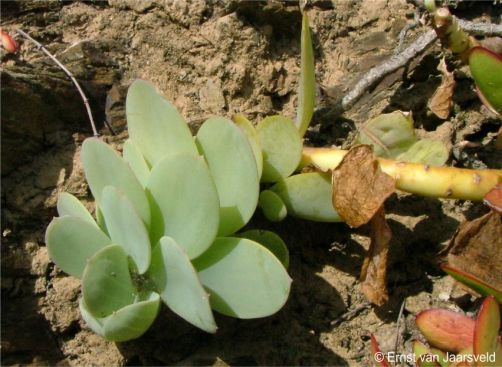
Fig. 3. Close-up of the leaves of Curio muirii growing at Valsriviermond, above the Gouritz River.
Description
Description
Trailing, branched, succulent shrublet becoming pendent on cliffs, stems to 1 m long, rooting where the branches touch rock ledges, all parts hairless (glabrous). The branches are terete, 5–6 mm diam., at first softly succulent (flaccid), becoming purplish grey and slightly woody, the internodes 4–8 mm apart, the branch tips often with aerial roots. The leaves are obovate to oblong-obovate, vertically oriented, succulent, bluish or glaucous green, covered with a powdery bloom (pruinose), crowded towards branch tips. The lower surface with 3 prominent translucent veins, the margin entire or with 1–3 pairs of shallow teeth, often becoming purplish. The leaf is obtuse to pointed and ending in a sharp tip (mucronate). The leaf base is wedge-shaped, the petiole short, up to 2 mm long. The older leaves becoming deciduous the from base. Inflorescence a spreading, drooping to ascending, sparsely branched corymb, 150–250 mm long. The peduncle is long and slender. The flower heads (capitula) discoid, oblong, 10 × 5 mm, with up to 8 involucral bracts (phyllaries). The dry, single-seeded fruit (cypsela) 3 × 0.8 mm and the pappus 5–6 mm long. Flowering time is mainly in summer, but occasionally at any time of the year.

Fig. 2. An illustration of Curio muirii by Marieta Visagie, drawn from plants growing in the Babylonstoren succulent collection which were collected at Badspoort near Calitzdorp, Western Cape.
Conservation Status
Status
Curio muirii is only known to occur on cliffs in a limited natural range and is assessed as Rare by the Red List of South African Plants. Plants are locally abundant, in habitats that are difficult to reach, and are well secured in their safe cliff habitat, and are thus not threatened.
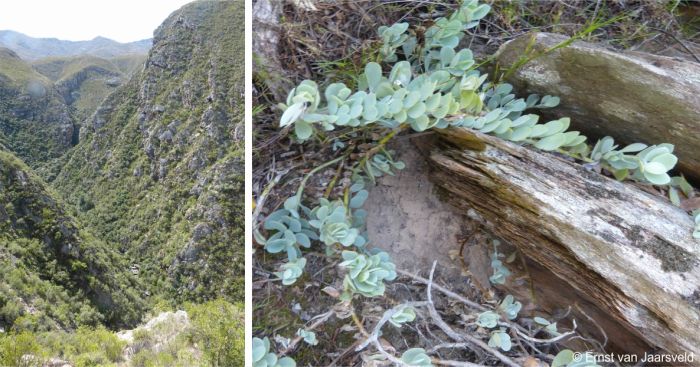
Fig. 3. Left, the upper reaches of the Nelsrivier at Osberg, Groot Swartberg, where Curio muirii grows, and right, a close-up of Curio muirii growing among shale rocks, near Osberg.
Distribution and habitat
Distribution description
Curio muirii occurs in the Western Cape. Plants have been recorded from cliffs and steep rocky slopes along the Gouritz River and its tributaries from Meiringspoort to Buffelspoort in the north, to the Gouritz River Bridge in the south. In its northern habitats, plants grow on quartzitic sandstone of the Peninsula Formation but towards the south also on Bokkeveld shale (Cape Supergroup) at altitudes of 50-800 m . The trailing branches form a network, rooted in crevices and ledges becoming drooping. Rainfall can be expected at any time of the year, during the summer usually from thundershowers, and cyclonic rainfall during the winter. Rainfall in its habitat varies, ranging from 300–400 mm per annum. The average daily maximum temperature is 23°C and average daily minimum is 11°C. The summers are hot with temperatures frequently above 30°C. The winters are mild with cold nights but frost is usually absent from the cliff-face habitat.
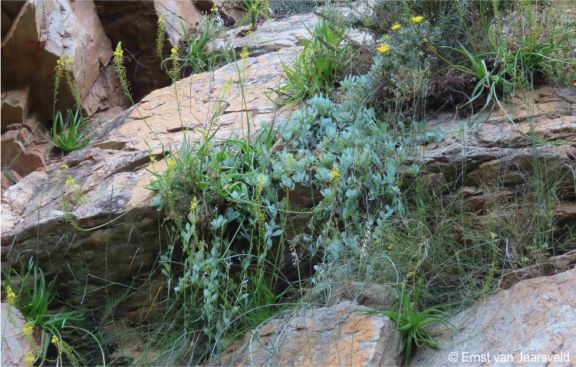
Fig. 4. Curio muirii in habitat on a south-facing sandstone cliff at Badspoort, south of Calitzdorp, here growing with Bulbine ramosa.
The plant drawn by Marieta Visagie depicts plants collected at Badspoort, south of Calitzdorp, on south-facing quarzitic sandstone cliffs adjacent to the Calitzdorp Spa, in 1984. Here the plant shares its habitat with other cliff dwelling plants such as Bulbine ramosa, Crassula badspoortensis, Crassula cotyledonis, Crassula muscosa, Crassula perforata, Delosperma badspoortense, Haemanthus coccineus, Tylecodon leucothrix, Albuca thermarum, Cotyledon tomentosa subsp. tomentosa and Tromotriche choanantha.

Fig. 5. Close-up of a Curio muirii plant growing at Meiringspoort.
At Meiringspoort plants are soft and delicate, and grow in association with Bulbine meiringii, Crassula nemorosa, Crassula pellucida subsp. marginalis and Curio ficoides. At Buffelspoort near Ladismith plants share their habitat with Astroloba cremnophila, Crassula rupestris subsp. marnieriana and Albuca buffelspoortensis.
Another population from cliffs near the top of Huisrivier Pass, at about 800 m above sea level, Curio muirii was growing together with Adromischus triflorus, Crassula orbicularis, Crassula rupestris subsp. marnieriana and Pelargonium alternans.
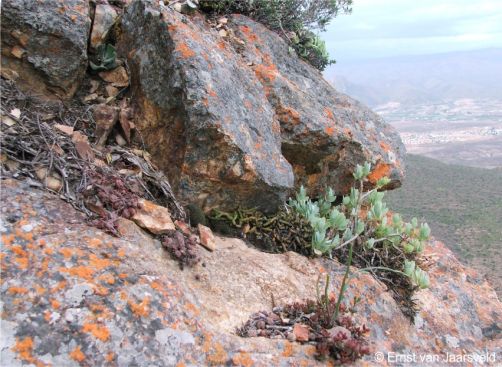
Fig. 6. Curio muirii growing on top of the Huisrivier Pass with Calitzdorp in the background, here growing among quartzitic sandstone rocks, sharing its habitat with Adromischus triflorus, Crassula rupestris subsp. marnieriana, Crassula atropurpurea and Crassula orbicularis.
Along the lower Gouritz River, plants are more robust and grow commonly on south-facing shale cliffs at the Valsriviermondmond and Groote Heuvel. Here the plants share their habitat with Cotyledon eliseae, Crassula orbicularis, Crassula cultrata, Curio ficoides, Euphorbia pentagona, Haworthia turgida and Gasteria carinata var. thunbergii.
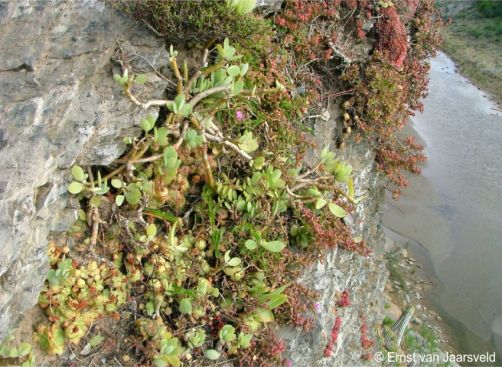
Fig. 7. Curio muirii growing on a shale ledge above the Gouritz River on the farm Valsriviermond together with Crassula orbicularis, Crassula rupestris, Delosperma sp., Euphorbia pentagona and Haworthia turgida (background) Western Cape.
Derivation of name and historical aspects
History
John Muir (1874–1974), a Scottish physician and naturalist, first collected this species in 1914 from cliffs along the Gouritz River south of the Langeberg Mountains. Muir emigrated to the Cape in 1892, eventually settled in the Riversdale District of the Cape Province. He had a keen interest in plants and made an extensive contribution to the flora of that region (Gunn & Codd). Louisa Bolus a mesemb specialist from the University of Cape Town and one of Africa’s greatest botanists, named the plant Senecio muirii in 1915.
In the list of southern African succulent plants (Herman et al. 1997), 44 succulent species are listed as belonging to the genus Senecio. The genus Curio was named by P.V. Heath in 1997 to accommodate species with fusiform (spindle-shaped) succulent leaves and uniform disc florets, lacking ray florets (Heath 1997, 1999; Manning 2013). When the author wrote up the plant for Flowering Plants of Africa (Van Jaarsveld & Visagie 2015), he transferred it to its rightful genus, Curio, to which it clearly belongs. Curio muirii is one of 5 related South African species often confined to cliffs. The others include Curio ficoides, C. pondoensis, C. repens (= Senecio serpens) and. C. talinoides. From these it is immediately separated by its dorsiventrally compressed succulent leaves and sparingly toothed leaves.
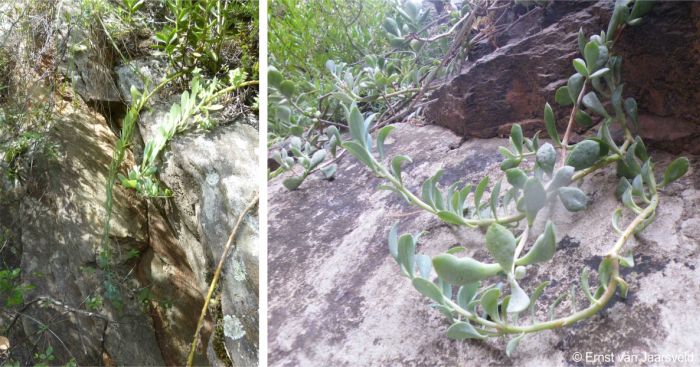
Fig. 8. Curio muirii trailing over cliffs at Osberg (left) and Meiringspoort (right).
Ecology
Ecology
The steep slopes and cliffs of its habitat are less disturbed by larger herbivores. The succulent leaves and stems enable the plant to cope during dry periods. The leaves wither from below. The sprawling nature of the plant enables it to wander and settle wherever the branch touches the substrate, ensuring its long term survival. The steep south-facing aspect means less sun exposure, and allows the plants to take advantage of both the shade and increased soil moisture that is retained more effectively. Branches which become detached, and land in crevices or on ledges will root, a method of vegetative propagation aiding its survival by allowing colonisation of more of the habitat. The vertically orientated leaves of Curio muirii have three prominent veins that are translucent on the abaxial side (underside). This can be clearly seen when a leaf is held up against a light source. These windows allow for efficient light penetration on the shady cliffs (Rowley 1994; Van Jaarsveld 2011). The leaf surface is covered by a powdery bloom which is easily rubbed off when a leaf is touched. The disc florets are pollinated by insects and the seeds are dispersesd by wind, the pappus attached to the seed acts as a parachute. At the Valsriviermond a hybrid was observed between Curio murii and C. ficoides.
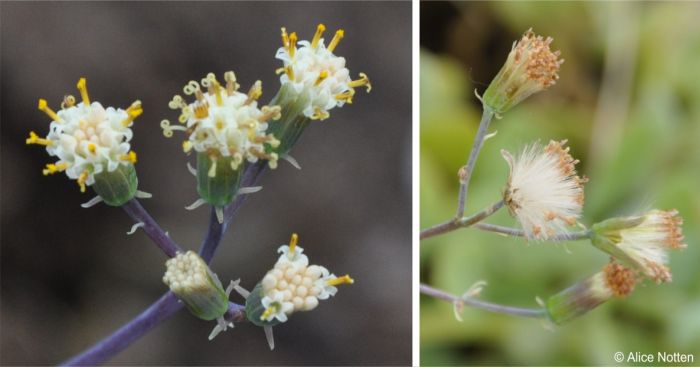
Fig. 9. Curio muirii in flower (left) and fruit (right) in the Botanical Society Conservatory (glasshouse) at Kirstenbosch.
Uses
Use
Apart from its horticultural use, not other medicinal or cultural uses have been recorded.
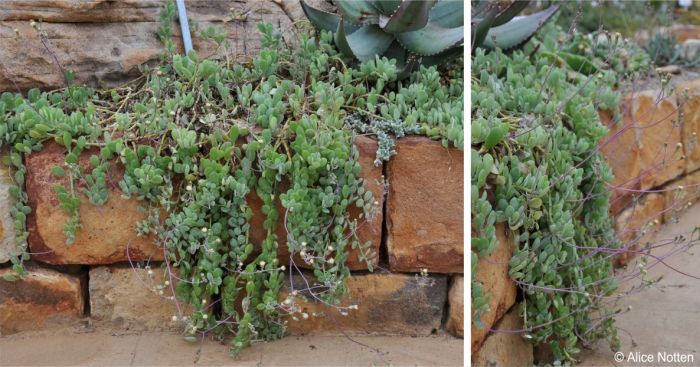
Fig. 10. Curio muirii growing in the Little Karoo bed in the Botanical Society Conservatory, Kirstenbosch NBG.
Growing Curio muirii
Grow
Curio muirii makes a wonderful trailing ground cover on south-facing gabions, terraces and rockeries in the water-wise garden. The striking bluish-green succulent leaves are decorative. Outdoors it is best grown in dry Mediterranean climates of the world. Curio muirii requires a shady, warm, well-drained position. It is also easily grown in containers and especially hanging baskets. It is especially attractive in rockeries among other succulents. In South Africa Cuirio muirii grows well in dry Fynbos, Succulent Karoo and Thicket gardens (Van Jaarsveld 2010). Plants were successfully established in the Kirstenbosch glasshouse and in the Babylonstoren cycad garden on steep south-facing artificial cliffs and embankments. Curio muirii tolerates a wide range of soils.
Plants are easily propagated by stem cuttings. preferably taken in spring or summer. The cuttings can either be rooted first in sand or planted directly into the required position but for successful establishment should be kept moist. Curio muirii plants are relatively fast growing.
References
- Bolus, L. 1915. Novitates Africanae. Annals of the Bolus Herbarium 1: 192-193.
- Clarke, H. & Charters, M. 2016. The illustrated dictionary of southern African plant names. Flora & Fauna Publications Trust, Jacana, Johannesburg.
- De Candolle, DC. 1838. Kleinia talinoides in Prodromus Systematis Naturalis Regni Vegetabilis, 6: 337.
- Eggli, U. (ed). 2002. Illustrated handbook of succulent plants: Dicotyledons. Springer, Berlin.
- Gunn, M. & Codd, L.E. 1980. Botanical exploration of southern Africa. Balkema, Cape town.
- Heath, P.V. 1997. Three new generic names in Asteraceae (part 1). Calyx 5(4): 136, 137.
- Heath, P.V. 1999. Three new generic names in the Asteraceae (part 2). Calyx 6(2): 54, 55.
- Linnaeus, C. 1767. Systema naturae per regnae tria naturae. Editio duodecima, reformata. Tomus 2 (Regnum vegetabile). Holmiae.
- Manning, J. 2013. Two new combinations in Caputia and Curio (Senecioneae). Bothalia 43(1): 93.
- Mucina, L. & Rutherford, M.C. (eds) 2006. The vegetation of South Africa, Lesotho and Swaziland. Strelitzia 19. South African National Biodiversity Institute, Pretoria.
- Muir, J. 1929. Flora of Riversdale. Memoirs of the Botanical Survey of South Africa 13.
- Raimondo, D., Von Staden, L., Foden, W., Victor, J.E., Helme, N.A., Turner, R.C., Kamundi, D.A. & Manyama, P.A. (eds) 2009. Red list of South African plants. Strelitzia 25. South African National Biodiversity Institute, Pretoria.
- Rowley, G.D. 1994. Succulent compositae. Strawberry Press, Mill Valley, California.
- Van Jaarsveld, E.J. & Visagie, M. 2015. Curio muirii. Flowering Plants of Africa 64:144-149.
- Van Jaarsveld, E.J. 2010. Waterwise gardening in South Africa and Namibia. Struik, Cape Town.
- Van Jaarsveld, E.J. 2011. Cremnophilous succulents of southern Africa: diversity, structure and adaptations. Ph.D.Thesis, University of Pretoria.
Credits
Ernst van Jaarsveld
Kirstenbosch National Botanical Garden (Retired)
Babylonstoren Farm (Current)
Extraordinary senior lecturer and researcher,
Department of Biodiversity and Conservation, University of the Western Cape
July 2024
Plant Attributes:
Plant Type: Ground Cover, Shrub, Succulent
SA Distribution: Western Cape
Soil type: Sandy, Loam
Flowering season: Early Summer, Late Summer
PH: Acid, Neutral
Flower colour: White
Aspect: Morning Sun (Semi Shade), Afternoon Sun (Semi Shade)
Gardening skill: Easy
Special Features:
Horticultural zones









Rate this article
Article well written and informative
Rate this plant
Is this an interesting plant?
Login to add your Comment
Back to topNot registered yet? Click here to register.